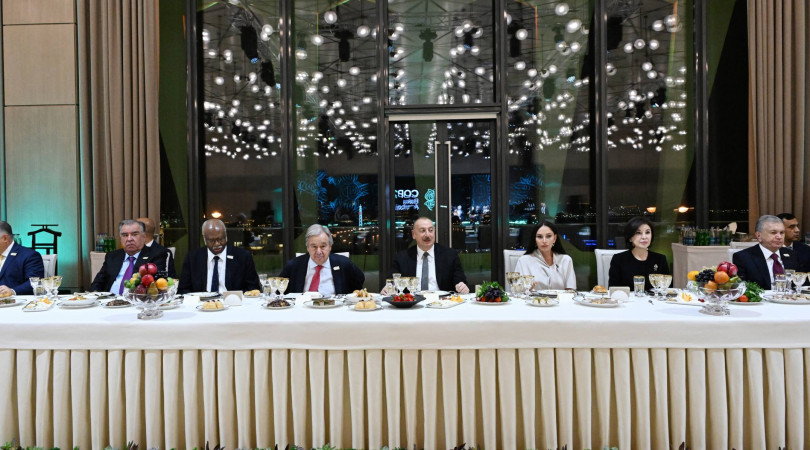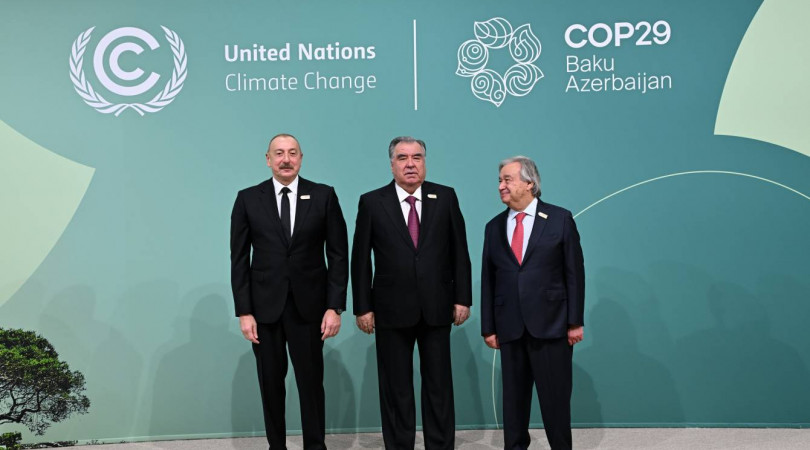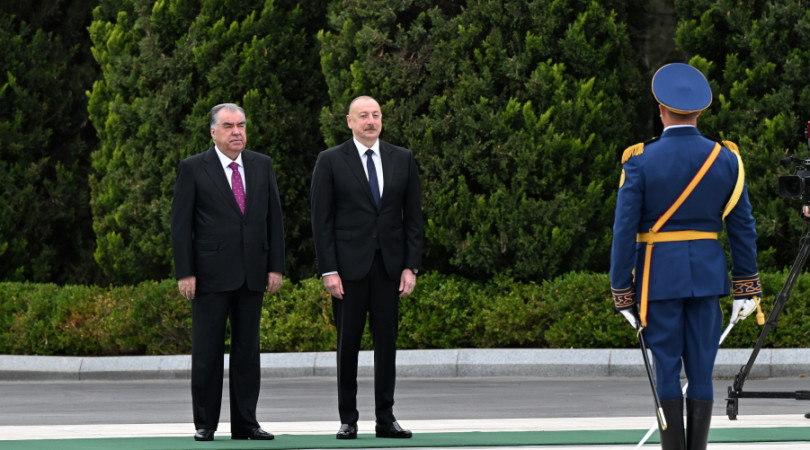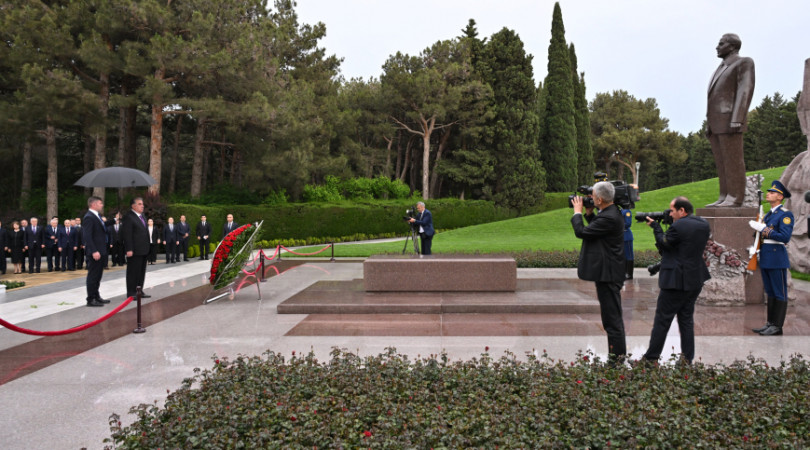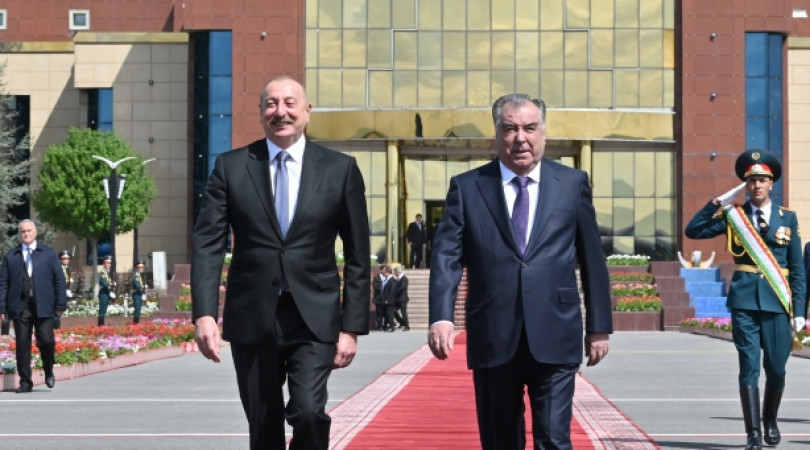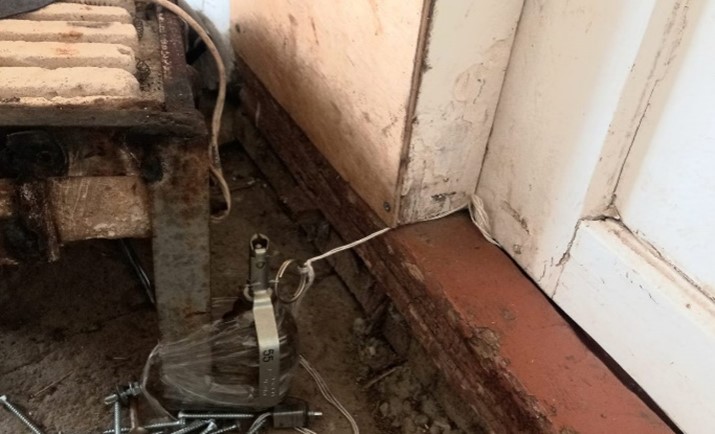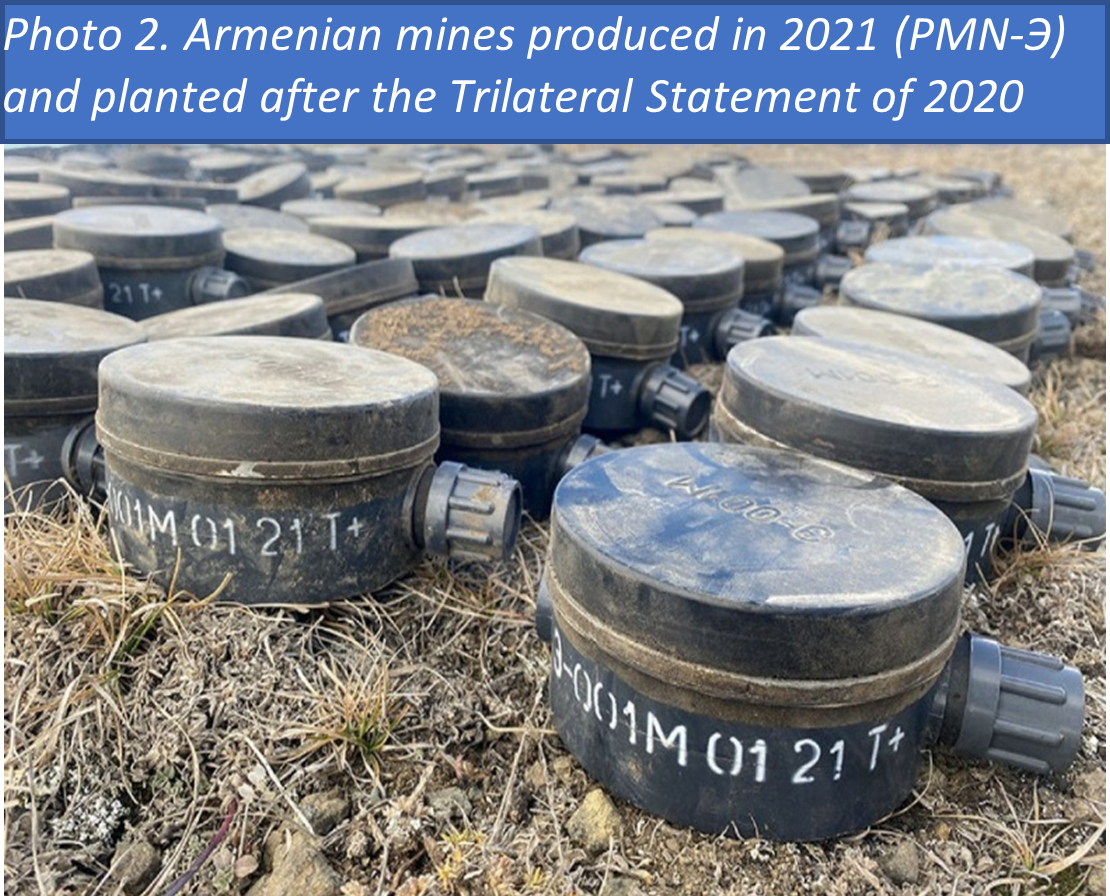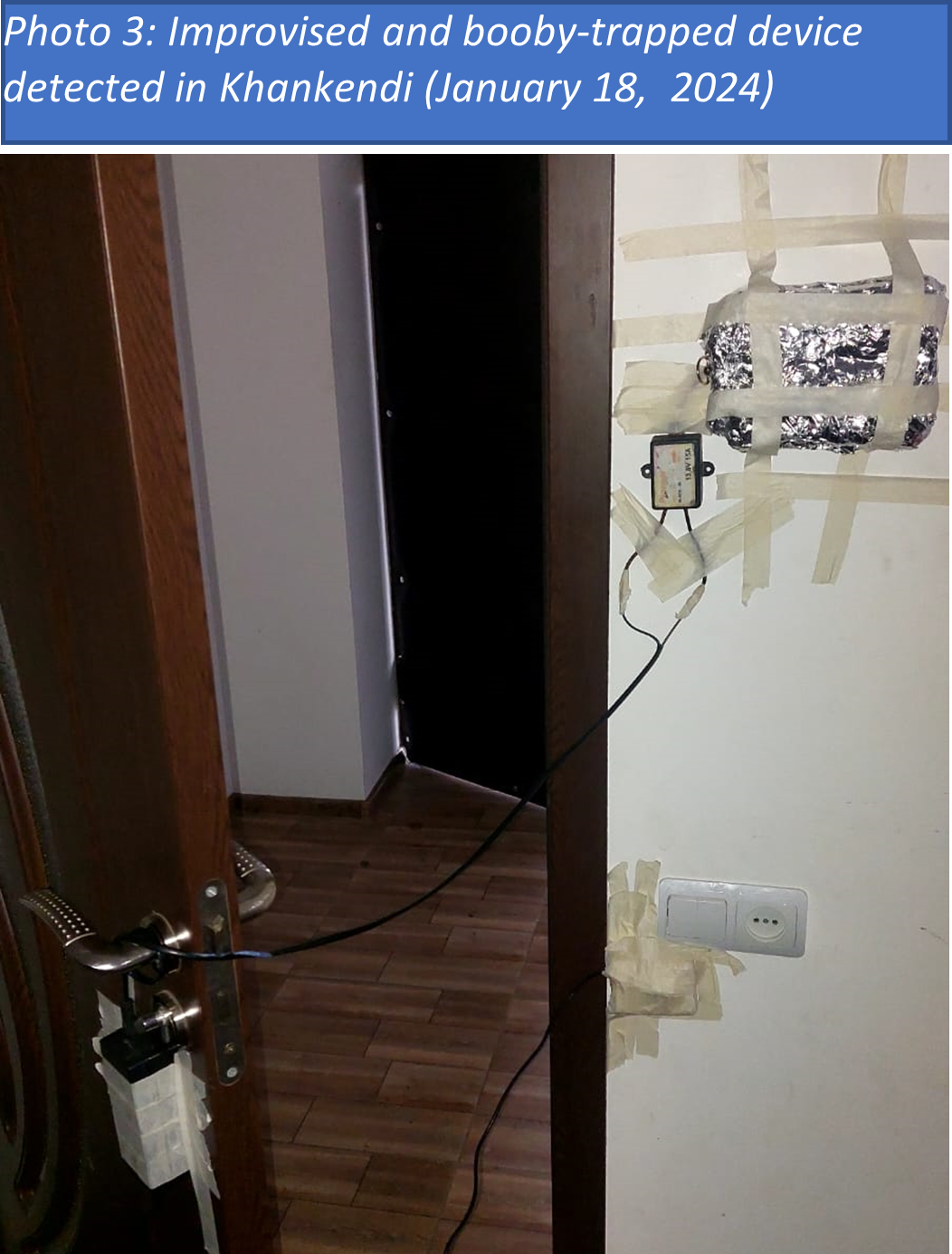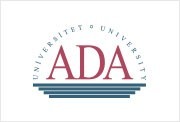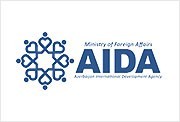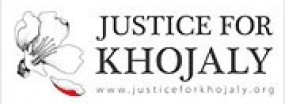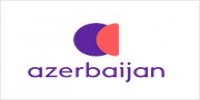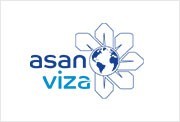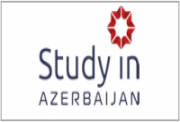Landmine contamination problem in Azerbaijan
The Republic of Azerbaijan faces a significant challenge due to landmine and explosive remnants of war (ERW) contamination as a result of nearly three decades of military occupation by Armenia.
Azerbaijan is among the most heavily mine-contaminated countries globally, with an estimated 1.5 million landmines and unknown number of ERW contaminating more than 13% of nation’s territories, posing severe risks to civilians and hindering socio-economic development.
The latest survey indicates that total contaminated area in the liberated territories of Azerbaijan stands at approximately 11,667 square kilometres. This area constitutes approximately 13.47% of the nation's total territory (the previous figure was 11.88%) of 86,600 square kilometres.
From the end of war in 2020 until June 30, 2024, 219 landmine explosion incidents occurred, resulting in 369 victims, including children and women, underscoring the urgent need for mine clearance and victim assistance. Over the last 30 years, the cumulative toll of landmine victims in Azerbaijan has reached 3,448.
The end of war in 2020 marked the beginning of an extensive humanitarian demining in Azerbaijan to restore safety in the liberated territories, facilitating the reconstruction of these areas and the safe return of former internally displaced persons (IDPs). Foreign assistance has accounted for merely 5% of the resources dedicated to demining. This is notably low, both in light of the gravity of demining challenges Azerbaijan confronts and when compared to the level of contributions typically made by the international donor community to similar issues elsewhere.
Armenia’s refusal to present accurate maps of landmines it planted on Azerbaijani territory complicates the demining efforts and obstructs return of former 800,000 IDPs to their homes.
Given the immense adverse humanitarian impact, and the fact that lingering landmine contamination represents a challenge to efforts to achieve peace and reconciliation, Azerbaijan counts on adequate political and practical support by the international community to its demining efforts as a matter of human solidarity.
In this regard, we kindly call on our partners to issue statements expressing human solidarity with Azerbaijan in addressing this grave problem, condemning Armenia’s widespread and indiscriminate emplacement of landmines as part of its illegal use of force against the territorial integrity of Azerbaijan, and to urge Armenia to present accurate maps of landmines it planted in Azerbaijan.
We would appreciate practical assistance for demining efforts of Azerbaijan. Given Azerbaijan's relatively developed institutional capacity and training frameworks, the most critical form of assistance needed at this juncture is direct financial donations to amplify the scope of operations. Other priorities include mine victim assistance (as well as providing prostheses); technical surveys and feasibility studies; data management and technological advancements; implementing geo-spatial methodologies and technology layering to refine clearance needs; support for female demining teams; mechanical demining enhancement; mine detection dogs (MDD) training; demarcation and fencing; and explosive ordnance risk education (EORE).
Contents
Scope and Extent of the Mine Problem in Azerbaijan. 1
Azerbaijan’s Policy and Practice in Mine Action. 1
Institutional Framework and Key Stakeholders. 1
Explosive Ordnance Risk Education (EORE) 1
Foreign assistance and international cooperation. 1
Annual international conference on landmine problem.. 1
Devising a Sustainable Development Goal on landmine problem.. 1
Highlighting environmental impact of landmines. 1
Emphasizing the impact of landmines on cultural property. 1
Non-Aligned Movement Contact Group on Humanitarian De-mining. 1
Key Priorities for International Assistance: 1
Annex 1: Map depicting mine incidents from 2020 to June 30th 2024. 1
Executive Summary
The Republic of Azerbaijan faces a significant challenge due to landmine and explosive remnants of war (ERW) contamination as a result of nearly three decades of military occupation by Armenia. The end of war in 2020 marked the beginning of an extensive humanitarian demining initiative to restore safety in the liberated territories, facilitating the reconstruction of these areas and the safe return of former internally displaced persons (IDPs). This quarterly report provides general information on the mine problem in Azerbaijan and outlines the achievements, and challenges in mine action in the period from April to June 2024.
Key Findings:
- Azerbaijan is among the most heavily mine-contaminated countries globally, with an estimated 1.5 million landmines and unknown number of ERW contaminating more than 13% of nation’s territories, posing severe risks to civilians and hindering socio-economic development.
- Over the last 30 years, the cumulative toll of landmine victims in Azerbaijan has reached 3,448.
- From the end of war in 2020 until 30 June 2024, 219 landmine explosion incidents occurred, resulting in 369 victims, including children and women, underscoring the urgent need for mine clearance and victim assistance.
- Since the start of large-scale humanitarian demining in 2020, foreign assistance has accounted for merely 5% of the resources dedicated to humanitarian demining in Azerbaijan. This is notably low, both in light of the gravity of demining challenges Azerbaijan confronts and when compared to the level of contributions typically made by the international donor community to similar issues elsewhere.
- Armenia’s refusal to present accurate maps of landmines it planted on Azerbaijani territory complicates the demining efforts and obstructs return of 800,000 former IDPs to their homes.
Progress Made:
- ANAMA, in collaboration with partners, has spearheaded demining operations, capacity building initiatives, and awareness-raising activities to mitigate the risks posed by landmines and ERW.
- Since the end of war in 2020, important progress has been attained in demining operations, with a total of 145,713.6 hectares of land successfully cleared of 52,247 mines and 70688 ERW. The total area cleared constitutes approximately 12.4 percent of the total estimated contaminated area, and the number of found landmines constitutes approximately 3.48 percent of the estimated 1,5 million landmines.
- In the second quarter of 2024 alone, 6,538 explosives were discovered and 16,553.7 hectares of land were cleared. These achievements account for 58.9% and 59.2%, respectively, of the total progress made in the first half of 2024. The notable increase in demining activity during the last quarter can be attributed to weather conditions, which are optimal for demining in spring and autumn, as well as enhanced efficiency of demining operations.
- Demining has enabled the initiation of reconstruction projects and the return of former IDPs, with awareness campaigns and risk education programs aimed at ensuring the safety of returning.
This report emphasizes the critical role of international cooperation and assistance in addressing the landmine issue in Azerbaijan. Enhanced global partnership is essential for accelerating demining operations, supporting victim assistance programs, and ensuring the safe and dignified return of former IDPs to their homes, thereby contributing to regional stability and development.
Scope and Extent of the Mine Problem in Azerbaijan
Azerbaijan is currently facing one of the most severe challenges related to landmines and ERW globally, a situation resulting directly from almost three decades of military occupation by Armenia. The laying of landmines by Armenia occurred not only during the armed conflict but also continued after its end on November 10, 2020. Armenia’s continuous emplacement of landmines persisted until its remaining troops were compelled to vacate Azerbaijani territory as a result of the anti-terror measures conducted by Azerbaijan on September 19-20, 2023.
What exacerbates these dire circumstances is the fact that Armenia deployed these mines in an indiscriminate manner, devoid of any military necessity and without appropriate markings required under international law. Armenia’s refusal to present accurate maps of landmines it planted on Azerbaijani territory further complicates matters. This reckless attitude and steps by Armenia considerably obstruct demining operations.
The landmine contamination in Azerbaijan remains a pressing issue. Our comprehensive surveys have made substantial progress, allowing to gather more accurate data on the extent of contamination. Through extensive efforts and the application of advanced methodologies, we are able to continuously refine our assessments. As a result of the recent updates the total contaminated area in the liberated territories of Azerbaijan stands at approximately 11,667 square kilometers. Estimated 1,5 million mines and unknown number of ERW contaminated those areas. The latest survey indicates that total contaminated area in the liberated territories of Azerbaijan stands at approximately 11,667 square kilometers. This area constitutes approximately 13.47% of the nation's total territory (the previous figure was 11.88%) of 86,600 square kilometers.
The contaminated areas span diverse terrains, including 60% flat agricultural lands, 30% grassy hills, and 10% mountainous regions. This widespread contamination affects areas that are crucial for the nation's agricultural productivity and the restoration of every-day life in the liberated territories.
The extensive contamination from these explosives poses a formidable obstacle to development, perpetually endangering human lives and hindering the safe return of former IDPs into their ancestral territories.
The omnipresent landmines, alongside the extensive destruction of civilian infrastructure, stand as the primary impediments to the expedited return of former IDPs. These mines significantly restrict access to indispensable resources, damage environment, obstruct agricultural endeavors, and delay the essential reconstruction and development of infrastructure, thereby exacerbating the challenges former IDPs face in their quest to return to their original homes.
The human toll of this contamination in Azerbaijan is immense. Unmarked and unfenced deployment of mines continues to be a deadly hazard, significantly threatening the lives of innocent civilians. 219 incidents of landmine explosions were recorded, resulting in 369 casualties, including 69 fatalities, from 2020 up to June 30, 2024. Among the victims, 9 were children and 2 were women.
Table 1. Number of victims by devices since 2020 (as of 30.06.2024) |
||||
|
ATM |
APM |
Cluster |
UXO/NA |
Total |
|
156 |
163 |
12 |
38 |
369 |
Notably, 256 individuals were affected by landmine incidents in regions beyond the former contact line, and there were 12 casualties due to cluster munitions. Over the last 30 years, the cumulative toll of landmine victims has reached 3,448.
Azerbaijan’s Policy and Practice in Mine Action
Azerbaijan has developed a comprehensive policy framework and solid capacity to tackle the challenges posed by landmines, reflecting a multifaceted approach that prioritizes human security. This policy also underscores the nation's commitment to fostering international human solidarity, actively pursuing global initiatives aimed at mitigating the impact of landmines. By seeking collaborative efforts and partnerships, Azerbaijan demonstrates its dedication to a collective response to this pressing issue. Furthermore, the country's landmine policy incorporates this task into Sustainable Development Goals (SDGs) framework, illustrating a strategic alignment with global objectives to ensure safety, well-being, and sustainable development. Through these concerted efforts, Azerbaijan aims to achieve a holistic solution to the landmine problem, emphasizing the importance of human security, international cooperation, and sustainable progress.
Institutional Framework and Key Stakeholders
ANAMA stands as the primary entity tasked with overseeing humanitarian demining initiatives within the country. Established in 1998, ANAMA embarked on its mission to mitigate the socio-economic repercussions of landmines and ERW by launching humanitarian demining operations in 2000. Following the liberation of occupied territories in late 2020, ANAMA underwent a strategic restructuring via a Presidential Decree in February 2021, aimed at enhancing its capacity to plan, coordinate, and supervise humanitarian demining efforts nationwide. This restructuring has facilitated the involvement of national stakeholders, alongside local and international NGOs, in mine action activities across Azerbaijan, ensuring all demining operations align with the International Mine Action Standards (IMAS).
Table 2. Operational resources for humanitarian mine clearance (as of 30.06.2024)
|
Agencies / companies |
Operational staff |
Mine detection dogs |
Mine clearance machines |
|
ANAMA |
1 708 |
97 |
47 |
|
Ministry of Defense |
250 |
2 |
20 |
|
Ministry of Emergency Situations |
50 |
6 |
4 |
|
State Border Service |
43 |
0 |
0 |
|
Local commercial operators: |
344 |
48 |
10 |
|
Alpha Demining |
96 |
20 |
2 |
|
Qaya Safety Solutions |
78 |
8 |
3 |
|
Safe Point |
116 |
10 |
2 |
|
Azerbaijan Demining Company |
54 |
10 |
3 |
|
Total |
2,395 |
153 |
81 |
A dedicated interagency Working Group on the Clearance of Mines and Unexploded Ordnance has been established to monitor the progress and ensure quality control of demining activities, in accordance with the annual demining plan. This group convened five times in the fourth quarter of 2023 to review operations and enforce standards.
The authorities have been transparent, providing updates on demining operations tailored to the strategic objectives and priorities of the state, including comprehensive insights into the equipment and tools deployed for these critical tasks.
Furthermore, ANAMA has significantly invested in capacity building in the first half of 2024, organizing training sessions covering 7 different subjects for mine clearance personnel from various agencies. During this period, 197 new recruits participated in basic humanitarian demining and battle area clearance courses, while 32 staff members attended in-service training at the ANAMA’s Goygol Training Center, underscoring the agency's commitment to enhancing the proficiency and safety of its demining workforce.
Alongside ANAMA, which leads the process with 1,708 operational staff, 97 mine detection dogs, and 47 mine clearance machines, the Ministry of Defense, Ministry of Emergency Situations, State Border Service, and various national private companies also hold substantial demining capabilities and actively participate in demining operations.
Clearance operations
Azerbaijan carries out extensive humanitarian mine clearance so that formerly displaced civilians can return to their homes without the threat of explosive hazards. The aim of humanitarian demining is to restore peace and security.
Given the vast extent of the problem and the constrained resources for mine action, the Azerbaijani government prioritizes the demining of critical areas such as access roads, essential infrastructure, and residential zones to facilitate the safe and timely return of former IDPs. Since the cessation of occupation in 2020, remarkable progress has been achieved in demining operations, with 145,713.6 hectares of land being cleared of 52,247 mines and 70,688 ERW. This cleared area represents about 12.4% of the total estimated contaminated region, with the discovered landmines accounting for roughly 3.48% of the estimated 1,5 million mines, while the extent of ERW contamination remains challenging to determine.
By June 30, 2024, ANAMA and other demining entities had conducted operations in 3,419 fields, clearing a total of 145,713.6 hectares from mines and ERW, neutralizing 70,688 pieces of ERW, 32,581 anti-personnel mines (APMs), and 19,666 anti-tank mines (ATMs), totaling 122,935 explosives.
In the second quarter of 2024 alone, demining efforts led to the discovery of 6,538 explosives and the clearance of 16,553.7 hectares of land. The significant surge in demining activities during this period can be attributed to favorable weather conditions for working in spring and autumn and increased operational efficiency. The second quarter's findings, representing 5.32% of the total discoveries since November 10, 2020, included a significant proportion of ERW (57.5%), APMs (26.5%), and ATMs (16%), underscoring the emphasis on former battlefield clearance. ANAMA led these efforts, accounting for 61.4% of the discoveries, while the Ministry of Defense, Ministry of Emergency Situations, State Border Service, and National Private Operators constituting to the remainder.
In total, demining operations during the first two quarters of 2024 resulted in the neutralization of 8,663 ERW, 1,529 APMs, and 916 ATMs (11,108 in total), covering 27,945.7 hectares of land.
Table 3. Area cleared in the 2nd quarter of 2024 (per operator)
|
Operator |
Area cleared (ha) |
|
|
Area cleared during the 2nd quarter 2024 |
Cumulative area since 10 Nov 2020 |
|
|
ANAMA |
11376.1 |
81583 |
|
Ministry of Defense |
1923.6 |
38537.3 |
|
Ministry of Emergency Situations |
175.8 |
1032.7 |
|
State Border Service |
8.1 |
2671.5 |
|
National private operators: |
3070.1 |
21889.1 |
|
Alpha Demining |
690.9 |
5299.7 |
|
Qaya Safety Solutions |
681.3 |
5470.5 |
|
Safe Point |
752.6 |
5352.8 |
|
Azerbaijan Demining Company |
945.3 |
5766.1 |
|
Total |
16553.7 |
145713.6 |
The clearance to date covers approximately 12.4% of all designated threat areas. The 2023 work plan was fulfilled, which targeted 50,063.5 hectares, with 48,463.5 hectares allocated for primary projects and 1,600 hectares for reserve projects. Future plans aim to expand clearance capacities to around 65,000 hectares annually. Under ANAMA's leadership, Azerbaijan's demining community not only addresses the immediate challenges within its borders but also accumulates valuable experience and innovative practices that contribute to global humanitarian demining efforts.
Table 4. Number of explosive devices found in the 2nd quarter of 2024 (per operator)
|
Operator |
Number of explosive remnants of war (ERW) found |
Number of anti-personnel mine (APM) found |
Number of anti-tank mines (ATM) found |
Combined number of ERW, APM and ATM found |
||||
|
Number found during the 2nd quarter 2024 |
Cumulative number found since 10 Nov 2020 |
Number found during the 2nd quarter 2024 |
Cumulative number found since 10 Nov 2020 |
Number found during the 2nd quarter 2024 |
Cumulative number found since 10 Nov 2020 |
Number found during the 2nd quarter 2024 |
Cumulative number found since 10 Nov 2020 |
|
|
ANAMA |
4163 |
45952 |
617 |
18579 |
523 |
11012 |
5303 |
75543 |
|
Ministry of Defense |
110 |
12815 |
21 |
10463 |
14 |
3318 |
145 |
26596 |
|
Ministry of Emergency Situations |
5 |
2246 |
2 |
1214 |
0 |
2642 |
7 |
6102 |
|
State Border Service |
12 |
480 |
18 |
1527 |
20 |
1488 |
50 |
3495 |
|
National private operators: |
975 |
9195 |
12 |
798 |
46 |
1206 |
1033 |
11199 |
|
Alpha Demining |
407 |
5045 |
0 |
12 |
3 |
69 |
410 |
5126 |
|
Qaya Safety Solutions |
136 |
1106 |
11 |
550 |
40 |
807 |
187 |
2463 |
|
Safe Point |
224 |
838 |
1 |
234 |
2 |
329 |
227 |
1401 |
|
Azerbaijan Demining Company |
208 |
2206 |
0 |
2 |
1 |
1 |
209 |
2209 |
|
Total |
5265 |
70688 |
670 |
32581 |
603 |
19666 |
6538 |
122935 |
Table 5. Areas cleared and number of explosives found in the 2nd quarter of 2024 (per district)
|
District |
Cleared area (ha) |
Total ERW/APM/ATM found |
||||
|
|
During the 2nd quarter of 2024 |
Cumulative during 2024 |
Found during the 2nd quarter of 2024 |
Cumulative found in 2024 |
||
|
Aghdam |
2482.9 |
4340.5 |
1049 |
2601 |
||
|
Aghdara |
23.5 |
73.7 |
1038 |
1320 |
||
|
Jabrail |
4093.9 |
8367.6 |
678 |
1135 |
||
|
Fuzuli |
2262.4 |
4046 |
1406 |
1878 |
||
|
Kalbajar |
1736.1 |
2109.5 |
382 |
384 |
||
|
Lachin |
1582.3 |
2183.4 |
78 |
101 |
||
|
Gubadly |
745.8 |
1477.2 |
34 |
128 |
||
|
Shusha |
100.8 |
153.5 |
59 |
63 |
||
|
Tartar |
308 |
392.1 |
106 |
136 |
||
|
Khankendi |
100.7 |
192.2 |
233 |
306 |
||
|
Khojavand |
907.7 |
1615 |
730 |
1117 |
||
|
Khojali |
336.9 |
671.3 |
209 |
1336 |
||
|
Zangilan |
1842.4 |
2291.6 |
22 |
50 |
||
|
Others |
30.3 |
32.1 |
514 |
553 |
||
|
Total |
16553.7 |
27945.7 |
6538 |
11108 |
||
Explosive Ordnance Risk Education (EORE)
The Government of Azerbaijan implements Explosive Ordnance Risk Education (EORE) initiatives aimed at minimizing the dangers posed by mines and unexploded ordnance. These efforts focus on enhancing awareness and fostering behavioral changes through public information campaigns, education, training, and community engagement. The primary goal of EORE is to ensure the comprehension of the risks associated with these hazards and adopt safer practices to protect individuals, property, and the environment. The indication of successful EORE activities must be behavior change of local population. The ultimate objectives are to mitigate risk to a manageable level, enabling people to live safely, and to facilitate the restoration of an environment conducive to economic and social development without the limitations posed by explosive hazard contamination.
As part of the "Great Return" program, in the 2nd quarter of 2024, ANAMA conducted Explosive Ordnance Risk Education (EORE) training sessions for 1515 former IDPs returning to Fuzuli, Lachin, Shusha, Khojali regions.
Per the request of the Ministry of Agriculture of the Republic of Azerbaijan, during the April – June 2024, ANAMA provided Explosive Ordnance Risk Education for 5504 farmers engaged to work and develop different directions of agriculture in the liberated areas.
In total, these initiatives have engaged over 289 local organizations and 481,341 individuals. Mine risk education groups have been established in 80 villages near mine-contaminated areas. Furthermore, 150,671 pieces of printed educational materials, 46,900 textbooks, and methodological aids related to mine risk education have been distributed. To enhance safety measures, 1160 warning billboards have been strategically placed across the liberated territories.
Victim Assistance
The Government provides assistance for the care and rehabilitation, and social and economic reintegration, of mine victims and for mine risk education programmes. Assistance is provided through a number of concrete actions to meet the immediate and long-term needs of mine accident survivors, their families and persons with disabilities. Assistance includes, but is not limited to, emergency and continuing medical care; physical rehabilitation; psychosocial support and social inclusion; and laws and public policies that promote effective treatment, care and protection for all disabled citizens.
Dedicated efforts are made by the Government of Azerbaijan to support mine-victims. The Government provides rehabilitation equipment as well as social and psychological services.
Mine victims were provided with psychological support and various services such as targeted social assistance, pension and different types of prosthetic devices.
In order to reintegrate mine victims into the society, the Government undertake relevant steps. Based on the MoU signed between ANAMA and Association of Football Federations of Azerbaijan the team of amputees from Azerbaijan mostly consist of mine victims participated in the final stage of the European Championship held in France in 2024.
While the Government is working to meet immediate needs of mine victims, more international assistance would be much appreciated.
Foreign assistance and international cooperation
Azerbaijan faces an immense landmine contamination and needs substantial foreign assistance. Azerbaijan’s active international involvement in the landmine issue extends beyond seeking assistance for its own substantial landmine problem. While international support adequate to the level of country’s enormous challenges is very much needed, it is crucial to emphasize that Azerbaijan’s motivation for active engagement primarily stems from its humane approach that recognizes the adverse impact of the landmine problem on mankind as a whole.
Foreign assistance
Azerbaijan welcomes support by foreign partners in humanitarian demining in forms of direct assistance and collaborative actions. ANAMA remains committed to enhancing its international collaborations and is continually seeking new avenues to expand and strengthen its external cooperation in humanitarian demining efforts.
Azerbaijan received assistance from numerous countries. Most of them channeled their assistance via UNDP or specialized NGOs. In partnership with the International Committee of the Red Cross (ICRC), ANAMA benefits from specialized training provided to its site paramedics, enhancing the safety and efficiency of demining operations. Furthermore, the collaboration with Mines Advisory Group (MAG) has facilitated training and mentoring programs specifically for female de-miners, promoting gender inclusivity in the field. The contribution of Mine Detection Dogs (MDDs) by the Marshall Legacy Institute (MLI) plays a crucial role in bolstering ANAMA's capabilities in detecting landmines.
Working closely with the Geneva International Centre for Humanitarian Demining (GICHD), ANAMA has improved its operational effectiveness through the adoption of the Information Management System for Mine Action (IMSMA) Core. This collaboration includes system usage assistance and comprehensive training for ANAMA experts, focusing on enhancing operational and informational efficiency.
A significant partnership among the European Union (EU), the United Nations Development Programme (UNDP), and ANAMA has led to the launch of a new project, funded with a budget of 4.25 million Euros, aimed at facilitating the safe return of former IDPs to liberated areas. This initiative is expected to benefit approximately 33,000 families by improving safety and restoring livelihoods in mine-affected regions. Through this project, ANAMA has achieved a milestone by establishing the first female demining teams in Azerbaijan and has provided its staff with advanced training in strategy and information management.
Supporting the empowerment of female deminers, ANAMA and UNDP have conducted gender-based training and assessments, engaging various mine action stakeholders in Azerbaijan. A workshop was held to develop a Gender Mainstreaming Strategy for ANAMA as part of the “NextGen Recovery Solutions and Human Mobility” project, funded by the UK government and implemented by UNDP. This initiative aims to enhance ANAMA's institutional capacity, promote gender mainstreaming in mine action, and foster partnerships with both international and national NGOs.
In collaboration with the US, MAG, and the International Eurasia Press Fund (IEPF), ANAMA has embarked on a project to train and equip four 14-person demining teams, further advancing its mission to create a safer environment and contribute to the global endeavor of achieving a mine-free world.
Since 2020, foreign assistance has accounted for merely 5% of the resources dedicated to humanitarian demining. This is notably low, both in light of the gravity of demining challenges Azerbaijan confronts and when compared to the level of contributions typically made by the international donor community to similar issues.
During the last quarter of 2023, Saudi Arabia pledged to provide 3 million USD direct assistance to ANAMA to support its demining operations. On January 16, 2024, a Memorandum of Financial Contribution was signed between Vugar Suleymanov, Chairman of the Board of the Mine Action Agency of the Republic of Azerbaijan, and Abdullah Muhammad Alwadei, Deputy Director of the Medical and Environmental Department of the King Salman Humanitarian Aid and Relief Center.
Italy also pledged to allocate 1.5 million Euros to UNDP for financing programs in support of Azerbaijan’s demining activities.
Given the immense adverse humanitarian impact, and the fact that lingering landmine contamination represents a challenge to efforts to achieve peace and reconciliation, Azerbaijan counts on adequate support by the international community to its demining efforts as a matter of humane solidarity.
International initiatives
Azerbaijan has embarked on numerous initiatives to galvanize international attention to the mine problem.
Annual international conference on landmine problem
Together with the United Nations, Azerbaijan co-organizes annual international conference on mine action, which has evolved into one of the prominent global dialogue venues addressing the mine problem. The first conference held in 2022 in Baku, Azerbaijan, saw the attendance of nearly 60 representatives from 34 countries and 4 international organizations.
At the 2nd conference entitled “Mine Threat Control – the Path to Sustainable Development” held on 25-26 May 2023, in Aghdam and Baku, Azerbaijan, nearly 190 delegates representing 51 countries and 16 international organizations participated (including former heads of state and government, parliamentarians, representatives of influential international organizations). The 2023 conference, which attracted greater participation by states, international organizations, and NGOs alike, produced a tangible final document addressing a wide range of issues on humanitarian demining and sustainable development.
Azerbaijan, in partnership with the UNDP, hosted the 3rd International Conference on the landmine issue, on topic "Mitigating the Environmental Impact of Landmines: Resource Mobilization for Safety and Green Future," May 30-31, 2024, in Zangilan and Baku.
The main theme of the conference, which was attended by over 300 guests from 75 countries, aligns with Azerbaijan's presidency of the Conference of the Parties to the United Nations Framework Convention on Climate Change (COP29). The focus emphasizes the urgent need to address the environmental repercussions of landmine contamination.
During the first day of the Conference the Statement of Intent between UNDP and ANAMA on cooperation in establishment of the ANAMA-UNDP International Centre of Excellence and Training for Mine Action in the territory of Azerbaijan was signed.
Devising a Sustainable Development Goal on landmine problem
One of the most concerning challenges to the achievement of the SDGs is the landmine problem, which undermines global efforts to end poverty, protect the planet, and ensure peace and prosperity for all. This problem hinders access to land and resources, impedes economic development, damages infrastructure and the environment, and creates pervasive fear and insecurity. Moreover, landmine contamination obstructs post-conflict reconciliation efforts, exacerbating the challenges to achieve lasting peace. What is more, the estimates indicate a steady increase in the scale and magnitude of this problem.
Despite the gravity of the landmine problem, mine action has not received the degree of attention it urgently requires. The level of international political engagement in and practical support for mine action remains rather modest.
As it was mentioned by the President of the Republic of Azerbaijan His Excellency Mr. Ilham Aliyev in his address to the participants of the 3rd International Conference on the landmine problem, Azerbaijan has officially declared humanitarian demining as the 18th National SDG. Azerbaijan proposed addressing the mine action within the Agenda 2030 process, believing that it would raise awareness, mobilize resources and enhance international cooperation on this issue, and is working to ensure the recognition of this issue as the UN`s Global 18th SDG.
Highlighting environmental impact of landmines
Azerbaijan has directly experienced detrimental environmental effects of landmines, with extensive portions of its farmland severely damaged and segmented due to the construction of military fortifications and the emplacement of mines by Armenia. These military engineering activities, along with the presence of mines and other unexploded ordnance, have significantly disrupted the land, affecting vegetation cover, water infiltration, and the flow of surface water, and have made vast areas of valuable agricultural land inaccessible.
In response, Azerbaijan actively communicates the adverse ecological impacts of landmines in various international forums, aiming to elevate global awareness of the issue and foster international consensus and collaboration.
Environmental issue incorporated into this year’s international landmine conference that was held in May 2024 in Azerbaijan.
Moreover, as part of its commitment to addressing environmental concerns related to landmines, Azerbaijan plans to host a side event focusing on the environmental consequences of landmines on the margins of the COP29 meeting in November 2024, integrating landmine issue into this important international discourse.
Emphasizing the impact of landmines on cultural property
Landmines, explosive ordnances and unexploded ordnances threaten cultural property by directly damaging them, limiting people’s access to these sites and disrupting connection to their heritage.
Azerbaijan has also been subjected to this devastating impact of landmines as much of its cultural heritage decimated during the occupation, and remaining sites are still inaccessible due to heavy contamination with landmines.
Upon Azerbaijan’s initiative, a resolution “The impact of mines on cultural heritage” was adopted on December 11, 2023, at the 15th meeting of states parties to the 1954 Hague Convention on the Protection of Cultural Property during Armed Conflict”. As a follow-up to this landmark resolution a “Special Conference on the Impact of landmines, explosive ordnances and unexploded ordnances on cultural property” was organized within the 6th World Forum on Intercultural Dialogue in Aghdam on May 3, 2024.
Non-Aligned Movement Contact Group on Humanitarian De-mining
Upon initiative by the President of Azerbaijan, His Excellency Mr. Ilham Aliyev, the Non-Aligned Movement established a Contact Group on Humanitarian De-mining in July 2023. The Group commenced its activities by holding the inaugural meeting in September 2023 in New York.
The NAM Contact Group, chaired by Azerbaijan, aims at fostering a collective approach to a problem that encompasses over 120 million landmines planted globally, with more than 100 million within NAM territories. The group's formation marks a significant step towards coordinated efforts in humanitarian mine action, emphasizing advocacy, best practice sharing, victim assistance, and resource mobilization. The Contact Group seeks to enhance global awareness, advocate for adherence to international norms, and improve the mobilization of resources towards achieving a mine-free world, thereby contributing to development, peace, and security for the affected countries.
Key Priorities for International Assistance
Given Azerbaijan's institutional capacity and training frameworks, the most critical form of assistance needed at this juncture is direct financial donations. Such contributions are essential to amplify the humanitarian mine action efforts and further augment the operational scope of ANAMA and other operators.
Other priorities identified for this phase include:
Mine Victim Assistance: Assisting in delivering medical care and support for people in Azerbaijan affected by mines, survivors and the families of the deceased, with medical care (including providing prostheses), psychological and social support for their rehabilitation and integration.
Technical Surveys and Feasibility Studies: Streamlining humanitarian mine clearance efforts through accelerated surveys and studies.
Data Management and Technological Advancements: Implementing geo-spatial methodologies and technology layering to refine clearance needs and optimize the tasking process within the national work plan.
Support for Female Demining Teams: Encouraging gender mainstreaming in mine action and empowering women in return, rehabilitation, reintegration and reconstruction phase by supporting the training and integration of female deminers, leveraging international partnerships for institutional capacity building.
Mechanical Demining Enhancement: Upgrading mechanical demining capabilities with specialized equipment for uneven terrains and armored machinery for safer operations.
Mine Detection Dogs (MDD) Training: Enhancing the MDD program with international expertise to maintain high competency levels through established training procedures and continuous on-site assistance.
Ground Penetrating Radar (GPR): Mounted on a drone with data logging and mapping software integrated for detection of deep buried minimum metallic mines.
Demarcation and Fencing: Implementing visible markers and fencing to prevent access to hazardous areas and mitigate mine migration due to seasonal weather changes.
Explosive Ordnance Risk Education (EORE): Integrating EORE to raise awareness through direct and indirect training methods.
Increased international support and cooperation are crucial to the success of mine action in Azerbaijan. Enhanced humanitarian demining efforts will not only reduce the incidence of mine victims but also facilitate the rehabilitation and reconstruction necessary for the safe, dignified, and voluntary return of over 800,000 former IDPs. By providing a secure environment and promoting well-being, these initiatives contribute significantly to eliminating the consequences of the past conflict and facilitate peace.
Azerbaijan is eager to collaborate with potential donors and organizations willing to support mine action in country and remains actively involved in international forums on landmine issues, sharing experiences and best practices to enhance global mine action efforts.
List of Annexes
Map depicting mine incidents from 2020 to June 30, 2024

